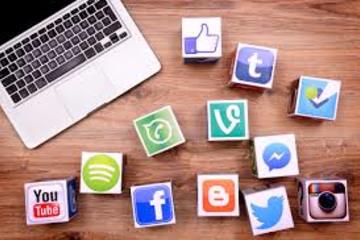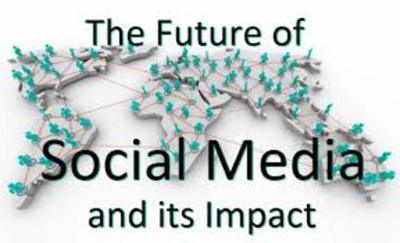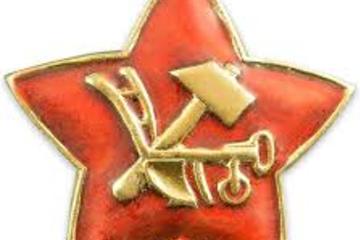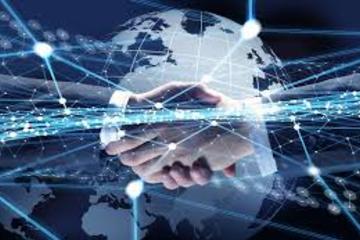We found 85 results that contain "technology"
Posted on: #iteachmsu


Technology
Technology ("science of craft", from Greek τέχνη, techne, "art, skill, cunning of hand"; and -λογία, -logia) is the sum of techniques, skills, methods, and processes used in the production of goods or services or in the accomplishment of objectives, such as scientific investigation.
NAVIGATING CONTEXT
Posted on: #iteachmsu


Science and technology
Science and technology is a topic that encompasses science, technology, and the interactions between the two. Science is a systematic enterprise that builds and organizes knowledge in the form of explanations and predictions about nature and the universe. Technology is the collection of techniques, methods or processes used in the production of goods or services or in the accomplishment of objectives, such as scientific investigation, or any other consumer demands.
Posted on: #iteachmsu


Computer security, cybersecurity or information technology security
Computer security, cybersecurity or information technology security (IT security) is the protection of computer systems and networks from information disclosure, theft of or damage to their hardware, software, or electronic data, as well as from the disruption or misdirection of the services they provide.
Cyber could be defined as something related to the group of computers or the internet. At the same time, security means the mechanism of protecting anything. So both the terms Cyber and security took together define the way of protecting user data from the malicious attacks that could lead to the security breach.
Cyber could be defined as something related to the group of computers or the internet. At the same time, security means the mechanism of protecting anything. So both the terms Cyber and security took together define the way of protecting user data from the malicious attacks that could lead to the security breach.
Posted on: #iteachmsu


15 Hot New Technologies That Will Change Everything By Christopher Null
The Next Big thing? The memristor, a microscopic component that can "remember" electrical states even when turned off. It's expected to be far cheaper and faster than flash storage. A theoretical concept since 1971, it has now been built in labs and is already starting to revolutionize everything we know
Disciplinary Content
Posted on: #iteachmsu


Social media: Social media is a computer-based technology
Social media is a computer-based technology that facilitates the sharing of ideas, thoughts, and information through the building of virtual networks and communities
ASSESSING LEARNING
Posted on: #iteachmsu


Playlist -- Management skills
WHAT IS MIS? | MANAGEMENT INFORMATION SYSTEMS
Management Information Systems (MIS) is the study of people, technology, organizations, and the relationships among them. MIS professionals help firms realize maximum benefit from investment in personnel, equipment, and business processes. MIS is a people-oriented field with an emphasis on service through technology. If you have an interest in technology and have the desire to use technology to improve people’s lives, a degree in MIS may be for you.
MIS PROFESSIONALS MAKE BUSINESS BETTER
Businesses use information systems at all levels of operation to collect, process, and store data. Management aggregates and disseminates this data in the form of information needed to carry out the daily operations of business. Everyone who works in business, from someone who pays the bills to the person who makes employment decisions, uses information systems. A car dealership could use a computer database to keep track of which products sell best. A retail store might use a computer-based information system to sell products over the Internet. In fact, many (if not most) businesses concentrate on the alignment of MIS with business goals to achieve competitive advantage over other businesses.
MIS professionals create information systems for data management (i.e., storing, searching, and analyzing data). In addition, they manage various information systems to meet the needs of managers, staff and customers. By working collaboratively with various members of their work group, as well as with their customers and clients, MIS professionals are able to play a key role in areas such as information security, integration, and exchange. As an MIS major, you will learn to design, implement, and use business information systems in innovative ways to increase the effectiveness and efficiency of your company.
MORE THAN CODING
A common misconception is that MIS only concerns coding (or writing computer code). While coding concepts represent some of the fundamental principles of information systems development, implementation, and use, many jobs in MIS do not utilize coding at all. A large portion of the MIS degree focuses on data analysis, teamwork, leadership, project management, customer service, and underlying business theories. These aspects of the degree are what set the MIS professional apart from a computer science specialist.
Do you enjoy working with people?
Would you enjoy the chance to work on global problems with people from all over the world?
Do you enjoy analyzing and solving problems?
Do you want to create innovative, cutting-edge technology solutions?
Do you want to learn how to make businesses more efficient, effective and competitive?
Then you should consider as your major the field that is experiencing a critical shortage of professionally trained individuals. A field where demand is skyrocketing with projected growth rates of 38 percent – the fastest of any business discipline (U.S. Bureau of Labor Statistics).
WHAT KINDS OF PEOPLE PURSUE MIS DEGREES?
The profiles of MIS professionals are varied, but in general, such individuals possess many of the following traits:
good problem solving skills
ability to effectively manage time and resources
a clear vision of “the big picture” as well as the “small details”
a desire to work closely with other people
excellent communication skills
ability to think strategically about technology
a desire to take responsibility for developing and implementing their own ideas
Management Information Systems (MIS) is the study of people, technology, organizations, and the relationships among them. MIS professionals help firms realize maximum benefit from investment in personnel, equipment, and business processes. MIS is a people-oriented field with an emphasis on service through technology. If you have an interest in technology and have the desire to use technology to improve people’s lives, a degree in MIS may be for you.
MIS PROFESSIONALS MAKE BUSINESS BETTER
Businesses use information systems at all levels of operation to collect, process, and store data. Management aggregates and disseminates this data in the form of information needed to carry out the daily operations of business. Everyone who works in business, from someone who pays the bills to the person who makes employment decisions, uses information systems. A car dealership could use a computer database to keep track of which products sell best. A retail store might use a computer-based information system to sell products over the Internet. In fact, many (if not most) businesses concentrate on the alignment of MIS with business goals to achieve competitive advantage over other businesses.
MIS professionals create information systems for data management (i.e., storing, searching, and analyzing data). In addition, they manage various information systems to meet the needs of managers, staff and customers. By working collaboratively with various members of their work group, as well as with their customers and clients, MIS professionals are able to play a key role in areas such as information security, integration, and exchange. As an MIS major, you will learn to design, implement, and use business information systems in innovative ways to increase the effectiveness and efficiency of your company.
MORE THAN CODING
A common misconception is that MIS only concerns coding (or writing computer code). While coding concepts represent some of the fundamental principles of information systems development, implementation, and use, many jobs in MIS do not utilize coding at all. A large portion of the MIS degree focuses on data analysis, teamwork, leadership, project management, customer service, and underlying business theories. These aspects of the degree are what set the MIS professional apart from a computer science specialist.
Do you enjoy working with people?
Would you enjoy the chance to work on global problems with people from all over the world?
Do you enjoy analyzing and solving problems?
Do you want to create innovative, cutting-edge technology solutions?
Do you want to learn how to make businesses more efficient, effective and competitive?
Then you should consider as your major the field that is experiencing a critical shortage of professionally trained individuals. A field where demand is skyrocketing with projected growth rates of 38 percent – the fastest of any business discipline (U.S. Bureau of Labor Statistics).
WHAT KINDS OF PEOPLE PURSUE MIS DEGREES?
The profiles of MIS professionals are varied, but in general, such individuals possess many of the following traits:
good problem solving skills
ability to effectively manage time and resources
a clear vision of “the big picture” as well as the “small details”
a desire to work closely with other people
excellent communication skills
ability to think strategically about technology
a desire to take responsibility for developing and implementing their own ideas
Posted on: #iteachmsu


EXAMPLES OF ARTIFICIAL INTELLIGENCE IN USE TODAY
Artificial Intelligence (AI) is the branch of computer sciences that emphasizes the development of intelligence machines, thinking and working like humans. For example, speech recognition, problem-solving, learning, and planning.
Today, Artificial Intelligence is a very popular subject that is widely discussed in the technology and business circles. Many experts and industry analysts argue that AI or machine learning is the future – but if we look around, we are convinced that it’s not the future – it is the present.
With the advancement in technology, we are already connected to AI in one way or the other – whether it is Siri, Watson, or Alexa. Yes, the technology is in its initial phase and more and more companies are investing resources in machine learning, indicating a robust growth in AI products and apps in the near future.
The following statistics will give you an idea of growth!
– In 2014, more than $300 million was invested in AI startups, showing an increase of 300%, compared to the previous year (Bloomberg)
– By 2018, 6 billion connected devices will proactively ask for support. (Gartner)
– By the end of 2018, “customer digital assistants” will recognize customers by face and voice across channels and partners (Gartner)
Today, Artificial Intelligence is a very popular subject that is widely discussed in the technology and business circles. Many experts and industry analysts argue that AI or machine learning is the future – but if we look around, we are convinced that it’s not the future – it is the present.
With the advancement in technology, we are already connected to AI in one way or the other – whether it is Siri, Watson, or Alexa. Yes, the technology is in its initial phase and more and more companies are investing resources in machine learning, indicating a robust growth in AI products and apps in the near future.
The following statistics will give you an idea of growth!
– In 2014, more than $300 million was invested in AI startups, showing an increase of 300%, compared to the previous year (Bloomberg)
– By 2018, 6 billion connected devices will proactively ask for support. (Gartner)
– By the end of 2018, “customer digital assistants” will recognize customers by face and voice across channels and partners (Gartner)
ASSESSING LEARNING
Posted on: #iteachmsu


What Is the Real Impact of Social Media?
Information and communication technology has changed rapidly over the past 20 years with a key development being the emergence of social media.
The pace of change is accelerating. For example, the development of mobile technology has played an important role in shaping the impact of social media. Across the globe, mobile devices dominate in terms of total minutes spent online. This puts the means to connect anywhere, at any time on any device in everyone’s hands.
The pace of change is accelerating. For example, the development of mobile technology has played an important role in shaping the impact of social media. Across the globe, mobile devices dominate in terms of total minutes spent online. This puts the means to connect anywhere, at any time on any device in everyone’s hands.
Assessing Learning
Posted on: #iteachmsu


technology Development
https://www.youtube.com/watch?v=vr8pNgjI9Ig
new technology
In technology development significant advances are as often the result of a series of evolutionary steps as they are of breakthroughs. This is illustrated by the examples of the steam engine and the computer. Breakthroughs, such as the transistor, are relatively rare, and are often the result of the introduction of new knowledge coming from a quite different area. Technology development is often difficult to predict because of its complexity; practical considerations may far outweigh apparent scientific advantages, and cultural factors enter in at many levels. In a large technological organization problems exist in bringing scientific knowledge to bear on development, but much can be done to obviate these difficulties.
new technology
In technology development significant advances are as often the result of a series of evolutionary steps as they are of breakthroughs. This is illustrated by the examples of the steam engine and the computer. Breakthroughs, such as the transistor, are relatively rare, and are often the result of the introduction of new knowledge coming from a quite different area. Technology development is often difficult to predict because of its complexity; practical considerations may far outweigh apparent scientific advantages, and cultural factors enter in at many levels. In a large technological organization problems exist in bringing scientific knowledge to bear on development, but much can be done to obviate these difficulties.
Authored by: Chathuri
Pedagogical Design
Posted on: #iteachmsu

WHAT IS TECHNOLOGY – MEANING OF TECHNOLOGY AND ITS USE
WHAT IS TECHNOLOGY – MEANING OF TECHNOLOGY AND ITS USE
WHAT IS TECHNOLOGY – MEANING OF TECHNOLOGY AND ITS USE
testing
vedio
WHAT IS TECHNOLOGY – MEANING OF TECHNOLOGY AND ITS USE
testing
vedio
Authored by: chathuri
Pedagogical Design
Posted on: #iteachmsu


Industry and Technology Developments
NAIC System.
Changes in industry demand and technological innovations are important factors affecting future occupational employment, as we saw in the previous section. Furthermore, the projected employment published by the BLS is given for detailed industries and occupations. Thus, I describe the industry classification systems used by the BLS and other federal agencies. These systems provide a framework for assigning codes to establishments, allowing for consistent data collection and analyses of economic statistics in industries over time.
Federal statistical agencies used the Standard Industrial Classification (SIC) system in 1939 when it was first published by the former Bureau of the Budget, which is now the Office of Management and Budget (OMB). Like all classification systems, it was updated periodically. However, economic changes, such as the emerging services-oriented economy, increased use of computers, rapidly evolving technology, and globalization, motivated the need to change the industry classification system.
Changes in industry demand and technological innovations are important factors affecting future occupational employment, as we saw in the previous section. Furthermore, the projected employment published by the BLS is given for detailed industries and occupations. Thus, I describe the industry classification systems used by the BLS and other federal agencies. These systems provide a framework for assigning codes to establishments, allowing for consistent data collection and analyses of economic statistics in industries over time.
Federal statistical agencies used the Standard Industrial Classification (SIC) system in 1939 when it was first published by the former Bureau of the Budget, which is now the Office of Management and Budget (OMB). Like all classification systems, it was updated periodically. However, economic changes, such as the emerging services-oriented economy, increased use of computers, rapidly evolving technology, and globalization, motivated the need to change the industry classification system.
Authored by: Wendy Martinez
Disciplinary Content
Posted on: #iteachmsu


The relationship between science and technology
Science, technology and innovation each represent a successively larger category of activities which are highly interdependent but distinct. Science contributes to technology in at least six ways: (1) new knowledge which serves as a direct source of ideas for new technological possibilities; (2) source of tools and techniques for more efficient engineering design and a knowledge base for evaluation of feasibility of designs; (3) research instrumentation, laboratory techniques and analytical methods used in research that eventually find their way into design or industrial practices, often through intermediate disciplines; (4) practice of research as a source for development and assimilation of new human skills and capabilities eventually useful for technology; (5) creation of a knowledge base that becomes increasingly important in the assessment of technology in terms of its wider social and environmental impacts; (6) knowledge base that enables more efficient strategies of applied research, development, and refinement of new technologies.
Posted by: Greg Thomsan
Posted on: #iteachmsu

Fundamental concepts in nanoscience and nanotechnology- New technology- new
Fundamental concepts in nanoscience and nanotechnology- New technology
test
test
Authored by: Chathuri hewapathirana
Navigating Context
Posted on: #iteachmsu


TAM Model
Technology acceptance model
Based on the theory of reasoned Action, Davis ( 1986 ) developed the Technology Acceptance Model which deals more specifically with the prediction of the acceptability of an information system. The purpose of this model is to predict the acceptability of a tool and to identify the modifications which must be brought to the system in order to make it acceptable to users. This model suggests that the acceptability of an information system is determined by two main factors: perceived usefulness and perceived ease of use.
Perceived usefulness is defined as being the degree to which a person believes that the use of a system will improve his performance. Perceived ease of use refers to the degree to which a person believes that the use of a system will be effortless. Several factorial analyses demonstrated that perceived usefulness and perceived ease of use can be considered as two different dimensions (Hauser et Shugan, 1980 ; Larcker et Lessig, 1980 ; Swanson, 1987).
As demonstrated in the theory of reasoned Action, the Technology Acceptance Model postulates that the use of an information system is determined by the behavioral intention, but on the other hand, that the behavioral intention is determined by the person’s attitude towards the use of the system and also by his perception of its utility. According to Davis, the attitude of an individual is not the only factor that determines his use of a system, but is also based on the impact which it may have on his performance. Therefore, even if an employee does not welcome an information system, the probability that he will use it is high if he perceives that the system will improve his performance at work. Besides, the Technology Acceptance Model hypothesizes a direct link between perceived usefulness and perceived ease of use. With two systems offering the same features, a user will find more useful the one that he finds easier to use (Dillon and Morris, on 1996).
Based on the theory of reasoned Action, Davis ( 1986 ) developed the Technology Acceptance Model which deals more specifically with the prediction of the acceptability of an information system. The purpose of this model is to predict the acceptability of a tool and to identify the modifications which must be brought to the system in order to make it acceptable to users. This model suggests that the acceptability of an information system is determined by two main factors: perceived usefulness and perceived ease of use.
Perceived usefulness is defined as being the degree to which a person believes that the use of a system will improve his performance. Perceived ease of use refers to the degree to which a person believes that the use of a system will be effortless. Several factorial analyses demonstrated that perceived usefulness and perceived ease of use can be considered as two different dimensions (Hauser et Shugan, 1980 ; Larcker et Lessig, 1980 ; Swanson, 1987).
As demonstrated in the theory of reasoned Action, the Technology Acceptance Model postulates that the use of an information system is determined by the behavioral intention, but on the other hand, that the behavioral intention is determined by the person’s attitude towards the use of the system and also by his perception of its utility. According to Davis, the attitude of an individual is not the only factor that determines his use of a system, but is also based on the impact which it may have on his performance. Therefore, even if an employee does not welcome an information system, the probability that he will use it is high if he perceives that the system will improve his performance at work. Besides, the Technology Acceptance Model hypothesizes a direct link between perceived usefulness and perceived ease of use. With two systems offering the same features, a user will find more useful the one that he finds easier to use (Dillon and Morris, on 1996).
Authored by: chathuri
Pedagogical Design
Posted on: #iteachmsu


TAM Model 2
Technology acceptance model
Based on the theory of reasoned Action, Davis ( 1986 ) developed the Technology Acceptance Model which deals more specifically with the prediction of the acceptability of an information system. The purpose of this model is to predict the acceptability of a tool and to identify the modifications which must be brought to the system in order to make it acceptable to users. This model suggests that the acceptability of an information system is determined by two main factors: perceived usefulness and perceived ease of use.
Perceived usefulness is defined as being the degree to which a person believes that the use of a system will improve his performance. Perceived ease of use refers to the degree to which a person believes that the use of a system will be effortless. Several factorial analyses demonstrated that perceived usefulness and perceived ease of use can be considered as two different dimensions (Hauser et Shugan, 1980 ; Larcker et Lessig, 1980 ; Swanson, 1987).
As demonstrated in the theory of reasoned Action, the Technology Acceptance Model postulates that the use of an information system is determined by the behavioral intention, but on the other hand, that the behavioral intention is determined by the person’s attitude towards the use of the system and also by his perception of its utility. According to Davis, the attitude of an individual is not the only factor that determines his use of a system, but is also based on the impact which it may have on his performance. Therefore, even if an employee does not welcome an information system, the probability that he will use it is high if he perceives that the system will improve his performance at work. Besides, the Technology Acceptance Model hypothesizes a direct link between perceived usefulness and perceived ease of use. With two systems offering the same features, a user will find more useful the one that he finds easier to use (Dillon and Morris, on 1996).
Based on the theory of reasoned Action, Davis ( 1986 ) developed the Technology Acceptance Model which deals more specifically with the prediction of the acceptability of an information system. The purpose of this model is to predict the acceptability of a tool and to identify the modifications which must be brought to the system in order to make it acceptable to users. This model suggests that the acceptability of an information system is determined by two main factors: perceived usefulness and perceived ease of use.
Perceived usefulness is defined as being the degree to which a person believes that the use of a system will improve his performance. Perceived ease of use refers to the degree to which a person believes that the use of a system will be effortless. Several factorial analyses demonstrated that perceived usefulness and perceived ease of use can be considered as two different dimensions (Hauser et Shugan, 1980 ; Larcker et Lessig, 1980 ; Swanson, 1987).
As demonstrated in the theory of reasoned Action, the Technology Acceptance Model postulates that the use of an information system is determined by the behavioral intention, but on the other hand, that the behavioral intention is determined by the person’s attitude towards the use of the system and also by his perception of its utility. According to Davis, the attitude of an individual is not the only factor that determines his use of a system, but is also based on the impact which it may have on his performance. Therefore, even if an employee does not welcome an information system, the probability that he will use it is high if he perceives that the system will improve his performance at work. Besides, the Technology Acceptance Model hypothesizes a direct link between perceived usefulness and perceived ease of use. With two systems offering the same features, a user will find more useful the one that he finds easier to use (Dillon and Morris, on 1996).
Authored by: chathuri
Pedagogical Design
Posted on: #iteachmsu


Develop and actively communicate your course-level generative AI policy
1. Consider how AI technology might compel you to revise your course assignments, quizzes, and tests to avoid encouraging unethical or dishonest use of generative AI. 2. Develop and integrate a generative AI policy throughout the course resources:
Provide clear definitions, expectations, and repercussions of what will happen if students violate the policy.
Explain the standards of academic integrity in the course, especially as related to use of AI technologies, and review the Integrity of Scholarship and Grades Policy.
Be clear about what types of AI are acceptable and what versions of the technology students can use or not use.
Put this policy into D2L and any assignment instructions consistently.
3. Discuss these expectations when talking about course policies at the beginning of the course and remind students about them as you discuss course assignments:
Take time to explain to students the pros and cons of generative AI technologies relative to your course.
Explain the development of your policy and make clear the values, ethics, and philosophies underpinning its development.
Explain the repercussions of not following the course policy and submit an Academic Dishonesty Report if needed.
4. If you want to integrate AI in the classroom as an allowed or required resource:
Consult with MSU IT guidance about recommendations for use and adoption of generative AI technology, including guidelines for keeping you and your data safe.
Determine if MSU already has access to the tools you desire for free, and if not available through MSU, consider the cost and availability of the resources you will allow or require, and go through MSU's procurement process.
If you want to require students to use an AI technology that comes with a cost, put the resource into the scheduling system as you would a textbook, so students know that is an anticipated cost to them.
Provide clear definitions, expectations, and repercussions of what will happen if students violate the policy.
Explain the standards of academic integrity in the course, especially as related to use of AI technologies, and review the Integrity of Scholarship and Grades Policy.
Be clear about what types of AI are acceptable and what versions of the technology students can use or not use.
Put this policy into D2L and any assignment instructions consistently.
3. Discuss these expectations when talking about course policies at the beginning of the course and remind students about them as you discuss course assignments:
Take time to explain to students the pros and cons of generative AI technologies relative to your course.
Explain the development of your policy and make clear the values, ethics, and philosophies underpinning its development.
Explain the repercussions of not following the course policy and submit an Academic Dishonesty Report if needed.
4. If you want to integrate AI in the classroom as an allowed or required resource:
Consult with MSU IT guidance about recommendations for use and adoption of generative AI technology, including guidelines for keeping you and your data safe.
Determine if MSU already has access to the tools you desire for free, and if not available through MSU, consider the cost and availability of the resources you will allow or require, and go through MSU's procurement process.
If you want to require students to use an AI technology that comes with a cost, put the resource into the scheduling system as you would a textbook, so students know that is an anticipated cost to them.
Authored by: Super admin user
Posted on: #iteachmsu
![Article preview image]()
Science and technology is a topic that encompasses science, technology, and the interactions between the two. Science is a systematic enterprise that builds and organizes knowledge in the form of explanations and predictions about nature and the universe. Technology is the collection of techniques, methods or processes used in the production of goods or services or in the accomplishment of objectives, such as scientific investigation, or any other consumer demands.
Science may drive technological development, by generating demand for new instruments to address a scientific question, or by illustrating technical possibilities previously unconsidered. In turn, technology may drive scientific investigation, by creating demand for technological improvements that can only be produced through research, and by raising questions about the underlying principles that a new technology relies on.
For the majority of human history, technological improvements were achieved by chance, trial and error, or spontaneous inspiration. When the modern scientific enterprise matured in the Enlightenment, it primarily concerned itself with basic questions of nature. Research and development directed towards immediate technical application is a relatively recent occurrence, arising with the Industrial Revolution and becoming commonplace in the 20th century.
As academic fields, science and technology are often grouped with engineering and mathematics, as the STEM fields.
Science may drive technological development, by generating demand for new instruments to address a scientific question, or by illustrating technical possibilities previously unconsidered. In turn, technology may drive scientific investigation, by creating demand for technological improvements that can only be produced through research, and by raising questions about the underlying principles that a new technology relies on.
For the majority of human history, technological improvements were achieved by chance, trial and error, or spontaneous inspiration. When the modern scientific enterprise matured in the Enlightenment, it primarily concerned itself with basic questions of nature. Research and development directed towards immediate technical application is a relatively recent occurrence, arising with the Industrial Revolution and becoming commonplace in the 20th century.
As academic fields, science and technology are often grouped with engineering and mathematics, as the STEM fields.
Posted by: Chathuri Super admin..
Disciplinary Content
Posted on: #iteachmsu
![Article preview image]()
Science & technology is a topic that encompasses science, technology, and the interactions between the two. Science is a systematic enterprise that builds and organizes knowledge in the form of explanations and predictions about nature and the universe. Technology is the collection of techniques, methods or processes used in the production of goods or services or in the accomplishment of objectives, such as scientific investigation, or any other consumer demands.
Science may drive technological development, by generating demand for new instruments to address a scientific question, or by illustrating technical possibilities previously unconsidered. In turn, technology may drive scientific investigation, by creating demand for technological improvements that can only be produced through research, and by raising questions about the underlying principles that a new technology relies on.
For the majority of human history, technological improvements were achieved by chance, trial and error, or spontaneous inspiration. When the modern scientific enterprise matured in the Enlightenment, it primarily concerned itself with basic questions of nature. Research and development directed towards immediate technical application is a relatively recent occurrence, arising with the Industrial Revolution and becoming commonplace in the 20th century.
As academic fields, science and technology are often grouped with engineering and mathematics, as the STEM fields.
Science may drive technological development, by generating demand for new instruments to address a scientific question, or by illustrating technical possibilities previously unconsidered. In turn, technology may drive scientific investigation, by creating demand for technological improvements that can only be produced through research, and by raising questions about the underlying principles that a new technology relies on.
For the majority of human history, technological improvements were achieved by chance, trial and error, or spontaneous inspiration. When the modern scientific enterprise matured in the Enlightenment, it primarily concerned itself with basic questions of nature. Research and development directed towards immediate technical application is a relatively recent occurrence, arising with the Industrial Revolution and becoming commonplace in the 20th century.
As academic fields, science and technology are often grouped with engineering and mathematics, as the STEM fields.
Posted by: Chathuri Super admin..
Disciplinary Content
Posted on: #iteachmsu

Science, technology and innovation each represent a successively larger category of activities which are highly interdependent but distinct. Science contributes to technology in at least six ways: (1) new knowledge which serves as a direct source of ideas for new technological possibilities; (2) source of tools and techniques for more efficient engineering design and a knowledge base for evaluation of feasibility of designs; (3) research instrumentation, laboratory techniques and analytical methods used in research that eventually find their way into design or industrial practices, often through intermediate disciplines; (4) practice of research as a source for development and assimilation of new human skills and capabilities eventually useful for technology; (5) creation of a knowledge base that becomes increasingly important in the assessment of technology in terms of its wider social and environmental impacts; (6) knowledge base that enables more efficient strategies of applied research, development, and refinement of new technologies.
Posted by: Greg Thomsan
Disciplinary Content
Posted on: #iteachmsu


Science, technology and innovation each represent a successively larger category of activities which are highly interdependent but distinct. Science contributes to technology in at least six ways: (1) new knowledge which serves as a direct source of ideas for new technological possibilities; (2) source of tools and techniques for more efficient engineering design and a knowledge base for evaluation of feasibility of designs; (3) research instrumentation, laboratory techniques and analytical methods used in research that eventually find their way into design or industrial practices, often through intermediate disciplines; (4) practice of research as a source for development and assimilation of new human skills and capabilities eventually useful for technology; (5) creation of a knowledge base that becomes increasingly important in the assessment of technology in terms of its wider social and environmental impacts; (6) knowledge base that enables more efficient strategies of applied research, development, and refinement of new technologies.
https://iteach-testing.venturit.org/home/home_feed
https://iteach-testing.venturit.org/home/home_feed
Posted by: Greg Thomsan
Posted on: #iteachmsu


Science, technology and innovation each represent a successively larger category of activities which are highly interdependent but distinct. Science contributes to technology in at least six ways: (1) new knowledge which serves as a direct source of ideas for new technological possibilities; (2) source of tools and techniques for more efficient engineering design and a knowledge base for evaluation of feasibility of designs; (3) research instrumentation, laboratory techniques and analytical methods used in research that eventually find their way into design or industrial practices, often through intermediate disciplines; (4) practice of research as a source for development and assimilation of new human skills and capabilities eventually useful for technology; (5) creation of a knowledge base that becomes increasingly important in the assessment of technology in terms of its wider social and environmental impacts; (6) knowledge base that enables more efficient strategies of applied research, development, and refinement of new technologies.
Posted by: Greg Thomsan
Posted on: #iteachmsu


Block chain technology allows duplication of data. Thus it can help to store digital copies of the student certificates in the distributed and collaborated environment. Each university can act as node or Validator where any person in authority can validate student documents by requesting for verified information from the students.
Posted by: Chathuri Super admin..
Posted on: #iteachmsu


Technology ("science of craft", from Greek τέχνη, techne, "art, skill, cunning of hand"; and -λογία, -logia) is the sum of techniques, skills, methods, and processes used in the production of goods or services or in the accomplishment of objectives, such as scientific investigation.
Posted by: Greg Thomsan
Assessing Learning
Host: #iteachmsu


Computer Fundamentals
Computer is an advanced electronic device that takes raw data as an input from the user and processes it under the control of a set of instructions (called program), produces a result (output), and saves it for future use. This tutorial explains the foundational concepts of computer hardware, software, operating systems, peripherals, etc. along with how to get the most value and impact from computer technology.
Host: CTLI

Make It Count: High-Impact Assessment Feedback in Less Time
This workshop explores strategies for providing feedback that enhances student learning while helping you manage grading time. Participants will learn how to deliver intentional, elaborative feedback and how to prioritize higher-order concerns in written assignments. The session will also introduce educational technology tools and assessment strategies designed to streamline the feedback process. By the end, attendees will walk away with practical techniques to support student growth without increasing workload.
Upon completion of this learning experience, participants will be able to:
describe the role of feedback in promoting student learning
explain the benefits of providing students with intentional, elaborative feedback on multiple-choice questions (MCQs)
differentiate between higher-order and lower-order concerns in feedback on assignments
identify assessment strategies and educational technology tools that assist in time management when providing feedback.
Navigating Context
EXPIRED
Host: CTLI

Navigating D2L Functions as GTAs: Q&A
On behalf of the GREAT office at The Graduate School, check out Navigating D2L Functions as GTAs: Q&A
Date: Thursday, August 28, 2025 - 1:00pm to 2:00pm
Location: Zoom
Audience: Current Graduate Students & Postdocs
You are in a new Graduate Teaching Assistant role and have started working with D2L, and as you do so, questions about various functions and use of these arise. This workshop is a Q & A session with MSU IT experts on D2L, Gradebook, Accessibility Checker, Checklists, etc. Join us if you have any questions and need assistance as you navigate the Learning Management System as GTA.
Facilitators: Cui Cheng (Instructional Designer, MSU IT Educational Technology) and Jennie Wagner (Instructional Designer, MSU IT Educational Technology)
Zoom link will be sent closer to the workshop date.
Register Here
Navigating Context
EXPIRED
Host: MSU Libraries

Annual Digital Humanities THATCamp 2025
Greetings from the MSU Digital Humanities Community!
Please share the following invitation with your faculty colleagues, students, and staff.
We would like to invite you and your colleagues to join us for the annual Digital Humanities THATCamp, taking place on Thursday, August 21st from 8:30AM - 3:00PM in the Digital Scholarship Lab of the MSU Main Library (Second Floor, West).
*Light breakfast, lunch will be served. Please join us for an Ice Cream Social from 3:15PM-4:30PM. Location outdoors, TBD.
Please register here.
What is THATCamp?
THATCamp stands for “The Humanities and Technology Camp.” It is an unconference: an open, less formal meeting where humanists and technologists of all skill levels learn and build together in sessions proposed on the spot (From: http://thatcamp.org/about).
Who is THATCamp for?
This day-long, in person, fun, unconference is a fantastic opportunity for people on campus, whether formally a part of the DH@MSU community or not, to gather, learn from each other, and make connections to carry forward into the academic year. We welcome:
Members of the DH@MSU community, old and new
Students in the Digital Humanities undergraduate minor or graduate certificate, and students interested in the minor/certificate
Humanists who are engaged in digital and computer-assisted research, teaching, and creation
Anyone doing or interested in exploring work in the digital, especially (but not exclusively) in the areas of arts, humanities, and social sciences
Why THATCamp MSU?
DH@MSU is continuing our annual THATCamp each August targeted at MSU faculty, staff, and students for a few reasons:
To bring people back together after the summer
To introduce new folks to the DH@MSU community
Share knowledge, expertise, and skills among the community
Build connections between community members for future collaborations, troubleshooting, and ice cream social time.
THATCamp is FREE! Please register here.
Please direct any questions to Max Evjen (evjendav@msu.edu).
Navigating Context
EXPIRED
Host: CTLI

Setting the Tone from the Start
The way a course begins is crucial for educators to establish an environment that fosters engagement, collaboration, and a sense of belonging. Join us for a one-hour hybrid workshop where Educator Developers with MSU's Center for Teaching and Learning Innovation will share actionable strategies that lay the groundwork for an engaging and inclusive course experience from day one including items related to syllabi, expectation setting and pedagogical transparency, checking in on learner needs throughout the term, and way to build a sense of classroom community.
In this workshop, we'll delve into practical techniques and approaches educators can employ to create a welcoming and motivating atmosphere that resonates with learners. The content in this workshop will be primarily targeted to classroom instructors and settings, but tools and strategies are relevant for adaptation and use by any educator in any context. Whether you're a seasoned educator or just embarking on your teaching journey this academic year, "Setting the Tone from the Start" is designed to equip you with actionable insights that will make a difference in your classroom.
Upon completion of this learning experience, participants will be able to:
learn how to craft an engaging and purposeful course introduction that communicates the course's relevance, objectives, and expectations
discover techniques for fostering an inclusive and supportive learning community, understanding how to encourage peer connections and embrace diverse viewpoints
be equipped with a range of interactive strategies, including icebreakers and technology tools, to effectively engage students and cultivate an active learning environment that persists throughout the course duration.
The in-person location for this session is the Center for Teaching and Learning Innovation. Please join us in the Main Library, Room W207. For directions to W207, please visit the Room Locations page..
Navigating Context
EXPIRED
Host: CTLI

CTLI Plan-A-Thon
Join us for the CTLI Plan-a-thon! A day dedicated to preparing for a fall semester of teaching and learning. During the event you will have the opportunity to meet with CTLI Teaching Center and MSU IT consultants, work alone, collaborate on course planning or syllabus writing, and attend optional workshops. Stay for the whole day, a part of the day, or come and go as you're able. Connect with us in the ways that are most meaningful to you over warm beverages and conversation.
An optional hybrid-format breakout session includes:
Designing your Syllabus (hybrid from 10-11am)
Open Office hours will be available all day, focusing on pedagogical support and educational technology.
The in-person location for this session is the Center for Teaching and Learning Innovation. Please join us in the Main Library, Room W207 (Training Room 1). For directions to W207, please visit the Room Locations page.
Navigating Context
EXPIRED







